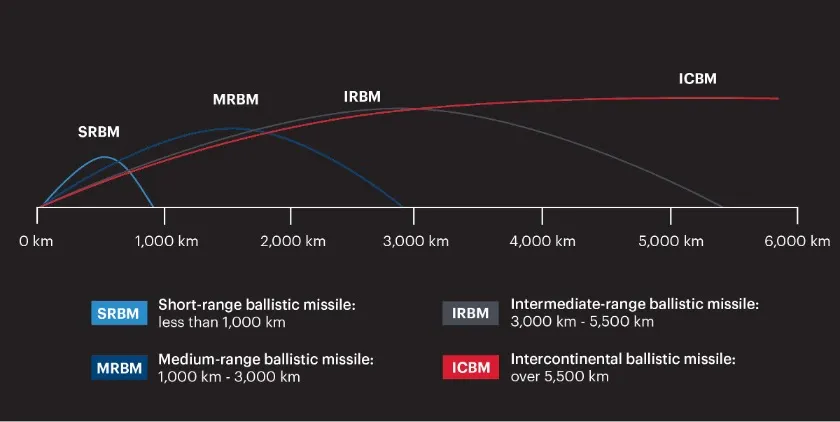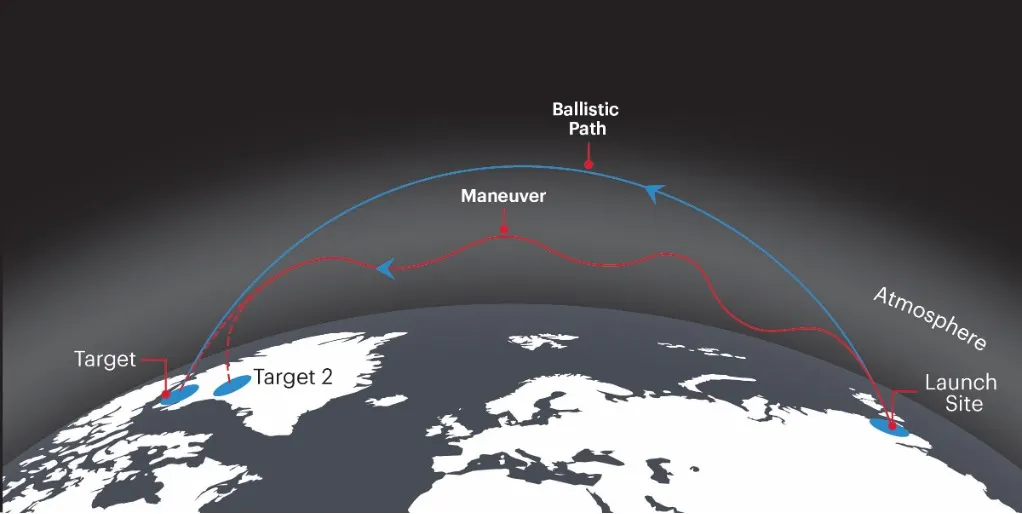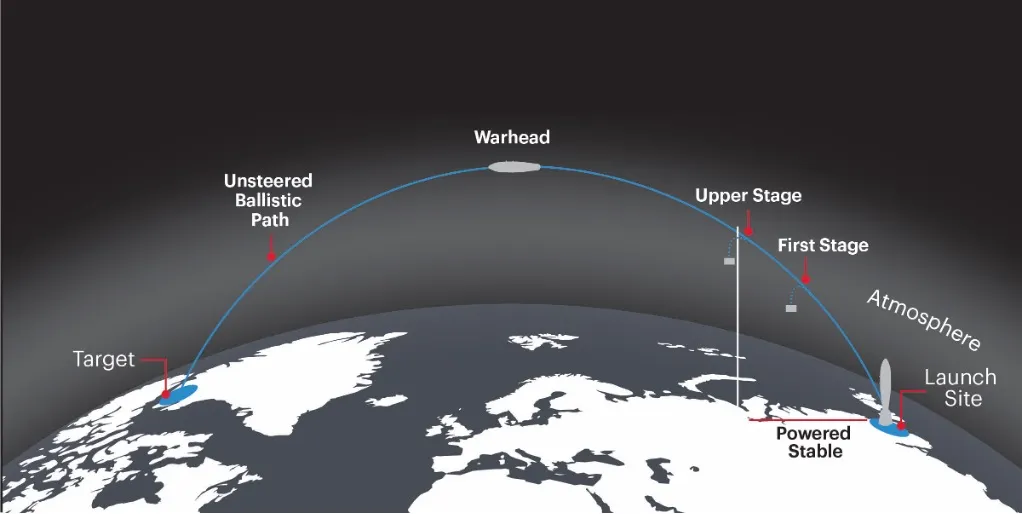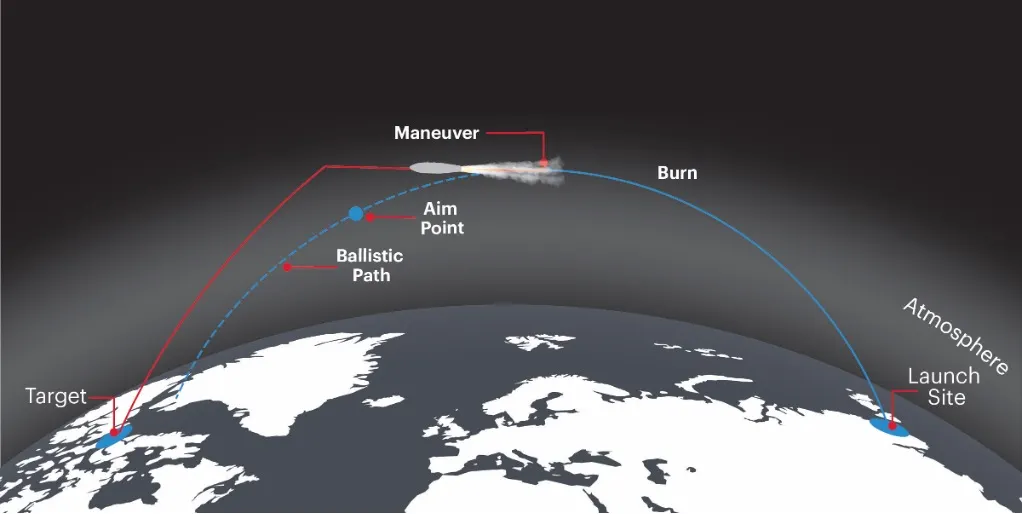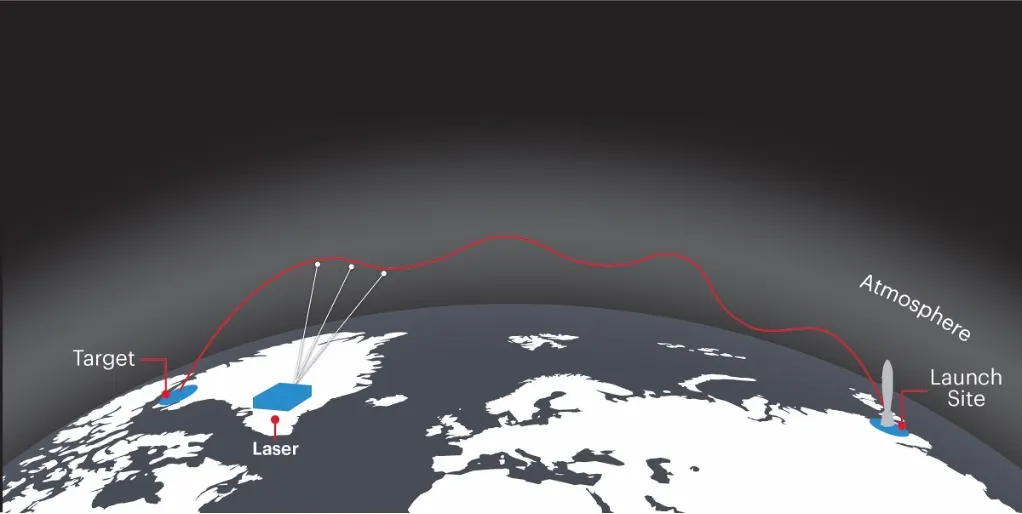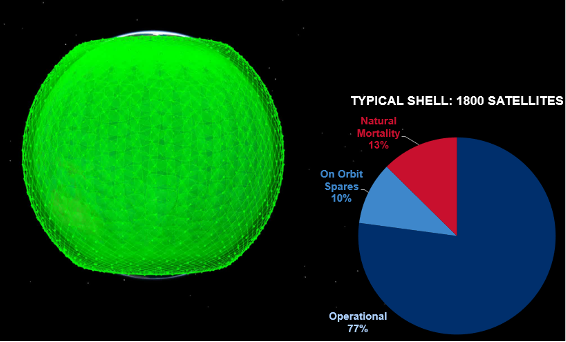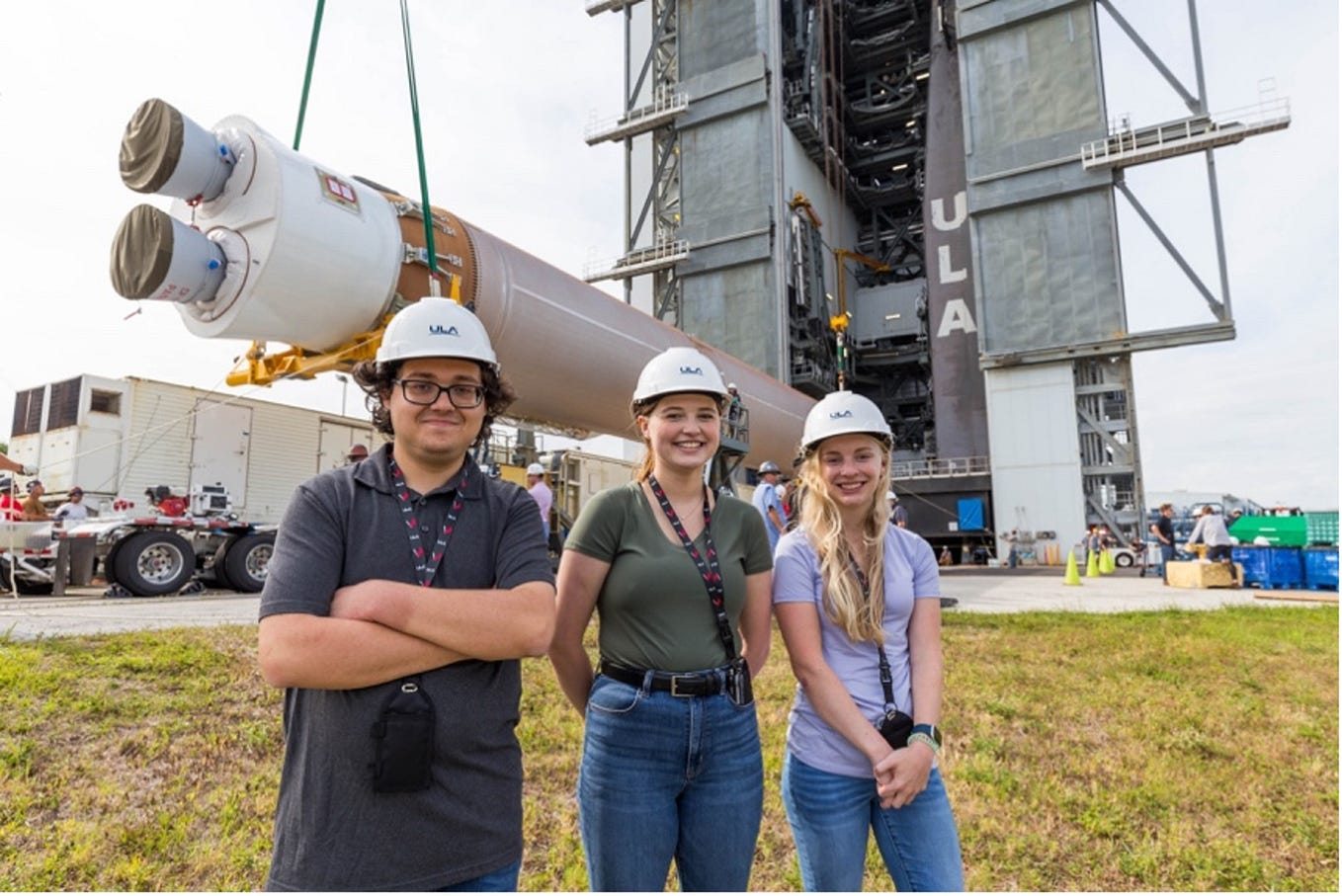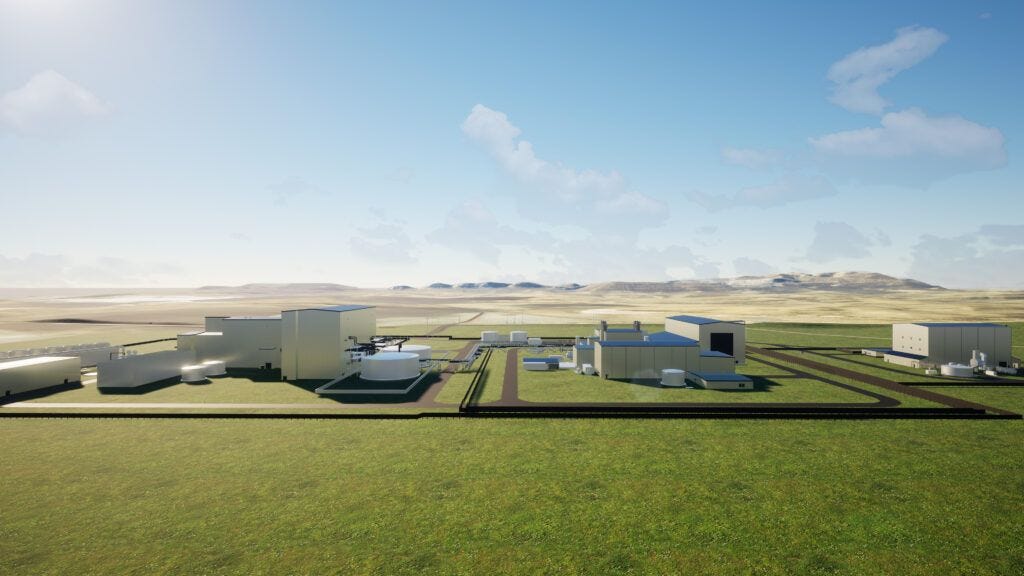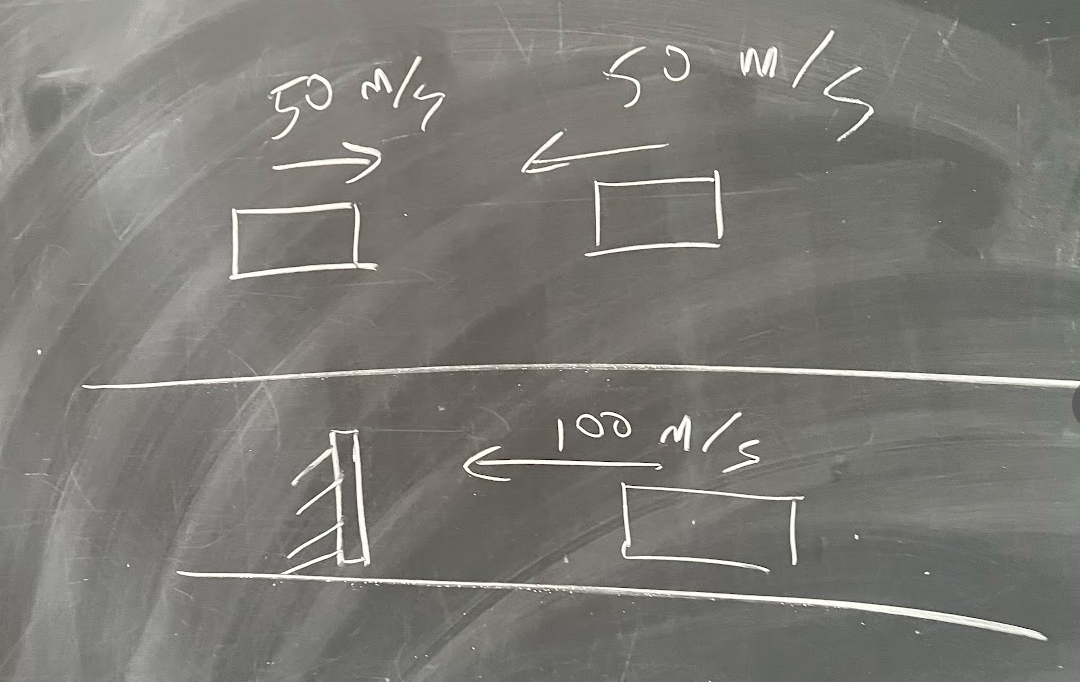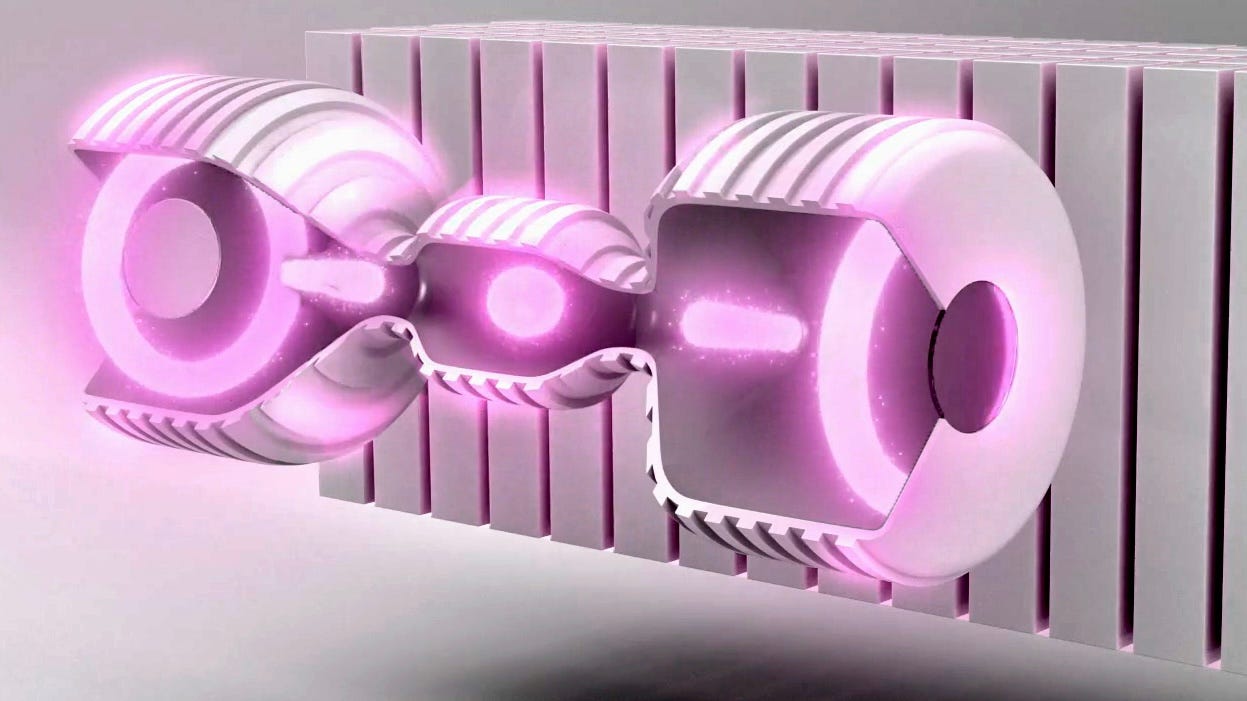Hypersonic Missiles are Just Misunderstood
By Tory Bruno
It’s hard to go anywhere without hearing about the new threat of hypersonic missiles. China and Russia have them, the United States does not! Even the news has been breathlessly announcing that “Russia used hypersonic missiles against Ukraine” — alarming! The average member of the public, as well as many policymakers, now understand that these things are dangerous because they are just too fast to shoot down. Clearly something needs to be done…
There’s just one problem; about half of that is just plain wrong. Like an angsty teenager, “hypersonic missiles” aren’t bad, they’re just misunderstood.
You see, hypersonic missiles are not new. We have had them since the 1950s. In fact, pretty much every ballistic missile in the medium (>1000 Km) range class is hypersonic. All intercontinental ballistic missiles (>5,500 Km) are hypersonic. The longer the range of a missile, the greater its velocity and the velocity of its warhead. That’s the intuitively obvious physics of ballistic missiles.
By the way, the U.S. has excellent defenses against all classes of ballistic missiles: short, medium, intermediate, and long-range. I have personally been a designer on several of these systems and developed the THAAD (Terminal High Altitude Area Defense) missile defense interceptor first as a designer, and then as its Program Manager. THAAD has become the gold standard for protecting the U.S. and our allies from hypersonic missiles.
So, what the heck is everybody carrying on about?
The misunderstanding arises from the short and lazy phrase “hypersonic missile.” The challenge of this new threat is NOT that it’s hypersonic (faster than Mach 5). The problem is that it’s not ballistic. Its correct and full name is the “Hypersonic Maneuvering Threat.”
“Maneuvering” is the problem. That is the characteristic that makes this “new” threat a challenge for our Missile Defense Systems. These are specifically designed for ballistic threats, which are common, and their extreme effectiveness is precisely why Russia and China have invested in something else.
What is a ballistic missile anyway?
Well, I’m glad you asked! By definition, a ballistic missile is a rocket that follows a ballistic trajectory. If you’re not a rocket scientist, that probably wasn’t very helpful, so let me explain.
A ballistic missile is like a major league pitcher. Swinging a powerful arm through a short distance, the pitcher imparts a massive amount of energy to the ball and lets it go. The ball then travels most of the distance between the mound and the plate after it’s released. The pitcher committed the path of the ball when he opened his fingers. (Yes, I know about curve balls, but even that path was also determined when the ball left the hand. It’s an analogy. Work with me…)
A ballistic missile works in a similar way. For example, the powered and steerable portion of a long-range ballistic missile flight is just four to five minutes long. Whereupon, the warhead is released to travel the remaining 40 to 50 minutes on its own. Just like the baseball above, the warhead’s path is fixed from the moment of release.
In fact, with thousands of miles of unguided flight between release and impact, ballistic missile designers work very hard to make that ballistic trajectory as predictable as possible to achieve target accuracy.
While the numbers are obviously classified, as a designer and the former Chief Engineer of the world’s most accurate ballistic system, I can give you another baseball analogy to help put this into context. The Trident II system’s accuracy is roughly like a Rockies pitcher throwing a strike across the plate at Denver’s Coors Field from a pitcher’s mound in Kansas… We worked very hard to make its trajectory smooth and predictable to pull this off.
So, why does all that matter?
The predictable and unalterable trajectory of a ballistic missile’s warhead matters because it’s also really, really fast. Ok, the hypersonic part does actually come into all of this, after all.
You see, we defend against ballistic missiles with other missiles. We do so because they are the only things we have that can fly at these crazy speeds. Missiles that defend against other missiles are called “interceptors.” They work by intercepting the warhead thrown at us by an attacker’s ballistic missile.
Because we would like to do that as far away from the people or thing(s) being protected as possible, the interceptor will travel for a significant amount of time before reaching the warhead.
During that travel time, the warhead will have traversed a large distance by virtue of its hypersonic velocity. So, we aim the interceptor at a point in front of the warhead, along its ballistic trajectory. Once we launch the interceptor to its not-so-romantic rendezvous with the incoming warhead, we have very little opportunity to change our aim point. We are committed.
This is like putting another pitcher a few feet to the right of the batter’s box and asking him to wait until he can see the baseball on its way from the pitcher’s mound and then throw another baseball to hit it in midair.
And, no, I’m not exaggerating, quite the opposite. The preferred method for ballistic missile defense is a “Kill Vehicle” (KV) to warhead collision. This is literally hitting a bullet out of the sky with another bullet, only harder. The kinetic energy imparted by this “Hit to Kill” technology imparts far more energy, more effectively, than any practical explosive. The velocity of the incoming warhead will be several times faster than a rifle bullet. It will be met nearly head on by a kill vehicle also traveling at multiples of a bullet’s velocity. The resulting kinetic energy of the collision is impressive and lethal.
But what happens if the warhead doesn’t do what it’s supposed to?
There’s the problem! If the warhead maneuvers after we’ve launched the interceptor, we’re in trouble.
The interceptor does have some ability to cope with this in flight. It will typically receive an update during its boosted flight from its ground radar that is tracking the incoming warhead. That In-Flight Target Update (IFTU) will give the interceptor the latest predicted trajectory, an indication of what its on-board sensor (typically an infrared camera) will see when it gets close, and which of the visible objects is the actual warhead. This IFTU comes in during the interceptor’s boost, so it can redirect to a new aimpoint within the “battle space” box that the energy remaining on the booster can fly to.
Sometimes, there is another update after the KV separates, but that battle space is obviously a lot smaller. The KV will then use its own sensor to steer itself into the warhead during its final (terminal) flight just before collision.
Unless… the warhead isn’t where it’s supposed to be. If it maneuvers to the outside of either of these battle spaces, after the interceptor has committed to its own flight path, it won’t be able to catch up to the warhead, which will fly right by.
Conventional missile defense systems are highly dependent upon the threat following a predictable ballistic trajectory.
That’s cheating! How can it do that?
There’s two basic ways to maneuver a hypersonic vehicle.
A long-range threat could theoretically stay attached to an upper stage or kick stage and wait for the defender to launch for an intercept in space (the “midcourse” of the flight path that traverses above the atmosphere), and then fire off the stage to carry the warhead outside the battle space.
Another, and more versatile approach, is to maneuver inside the atmosphere as a “glider” with aerodynamic control surfaces (sort of like fins). I have personally developed several prototype systems of this nature. By using the warhead’s extreme velocity, in conjunction with the atmosphere, very high G maneuvers are possible. You can think of this like “bobbing and weaving” to avoid the interceptor.
Because of the aerodynamic lift attainable by this, you can also avoid transiting through space entirely. This allows the warhead to avoid systems designed to intercept threats in space, by flying under them.
Additionally, a gliding warhead can achieve very high accuracy because it’s steerable all the way to the target and can extend its range by gliding, using the atmosphere to continue flight far beyond a simple ballistic trajectory. Sadly, the several hypersonic maneuvering systems I worked on were set down and left unfinished, as we pivoted to the Global War on Terror (GWOT).
Does Space play a role in all of this?
Yes!
The missile defense mission begins in Space, especially for longer-range threats. The Space-Based Infrared System (SBIRS) missile warning satellite constellation detects an adversary’s rocket launch, figures out if it might be hostile, and generally where it’s heading. SBIRS then gives a heads up to the terrestrial missile defense radars, allowing them to focus their search energy in a specific direction so they can detect the incoming warhead further out. This lets the missile defender extend the battle space, perhaps even allowing for multiple shots.
Space based assets could also track an exoatmospheric maneuvering threat through its mid-course burn, as discussed above. Crucially, only a space-based system can maintain 100% custody of a hypersonic maneuvering glider. This is because the lower altitude of the glider means that it will disappear over the horizon of terrestrial radars as it travels to its target. That creates gaps, during which, it can maneuver outside the battle space, divert to a completely different target, or even maneuver to approach its intended victim from behind, ambushing it where it has no defenses.
But is all that enough?
Sadly, no!
The most capable maneuvering threats will simply delay their crazy Ivan dodge until there is nothing the interceptor can do about it.
Our space-based systems will simply watch helplessly as the high G hypersonic glider dodges and weaves its way around our interceptors. Hypersonic they may be, but once committed to a battle space, the interceptors remain vulnerable to a maneuvering threat leaving the battle space once the intercept flight path is committed.
If only we had something faster than hypersonic…
As a matter of fact, I once worked on just such a technology: Directed Energy (DE).
In other words, Lasers (the most common form of DE). If you think hypersonic is fast, that’s nothing compared to the speed of light. Once again, this is a technology we set down to pursue the GWOT.
Once a line of sight is established from the DE platform to the warhead, it is impossible to outrun this “speed of light interceptor.” No high G maneuver will work. The battle space is the entire field of regard of the laser. That battle space is where the target actually is at that moment. We do not aim in front of the warhead as we do with a missile interceptor, so there is no opportunity to maneuver away before the interceptor arrives.
When we were developing this technology in earnest for missile defense 15 years ago, there were many theories about how it could be defeated. People thought that mirrored surfaces might just reflect the beam. It turned out that reflective surfaces are actually more vulnerable. Would the range be far enough? Maybe the atmosphere would scatter the beam too much? Could platforms defend themselves? What if the warhead or missile was spinning, etc.? All those questions were answered. The only real barrier at the time was generating very high laser power levels in a way that was logistically practical in the field.
Our marque platform was the Airborne Laser. This was a megawatt class system on a 747 aircraft. Its mission was to remain aloft near an adversary’s border to kill ballistic missiles while in the boost portion of flight over the attacker’s own territory. It used a chemical oxygen iodine laser (COIL) as the light source. It was, for all intents and purposes, a plane with a giant liquid rocket inside. Admittedly, not super practical in the field. This technological challenge has since been solved with multiple solid state and electric laser approaches now available.
Directed energy also has several unique and very attractive characteristics. The power level of the laser is inherently variable; lethal at full power or merely strong enough to blind a sensor at low power. The energy can also be applied very precisely. We used a tactical power level laser in a government sponsored exercise to demonstrate some pretty amazing versatility.
One day, we destroyed some small tactical missiles in flight by detonating their rocket motors. The next day, we disabled drones by specifically targeting their avionics, causing them to harmlessly lose altitude and crash, much to the confusion of the remote-control pilots. Later that same day, we sank zodiacs by puncturing their inflatable hulls, only to switch to simply immobilizing them by targeting just the outboard motor. You get the idea. We could apply our laser energy surgically across a wide variety of targets.
Another really important feature is that our laser was electric and powered by a simple, commercial generator sitting on a trailer. As long as we had gasoline, we could shoot all day. And each shot only consumed about a dollar’s worth of fuel! With interceptors, you must constantly be concerned about magazine depth. Will I run out of interceptors before the enemy runs out of missiles? That’s not really an issue with directed energy.
Let’s take a quick inventory:
Speed of light round, dialable affects, surgical targeting, bottomless magazine, and a dirt-cheap cost per kill… what’s not to love!
The time has come.
Where should we put these lasers?
Some should be placed as point defenses in a city, airfield, or at critical infrastructure sites.
However, the only practical way to defend against long-range hypersonic gliders, which can threaten entire regions along a single flight corridor, is from Space. Orbiting DE platforms, looking down on entire regions from the ultimate high ground can leverage “birth to death” tracking of any given glider, combined with its speed of light “interceptor,” to completely nullify this threat.
(Another very interesting capability of a DE platform is that it need not create a debris field should we ever be forced to employ them to defend ourselves in Space.)
And, in doing so, we can deter an attack from ever being seriously contemplated, stopping it before it begins.
